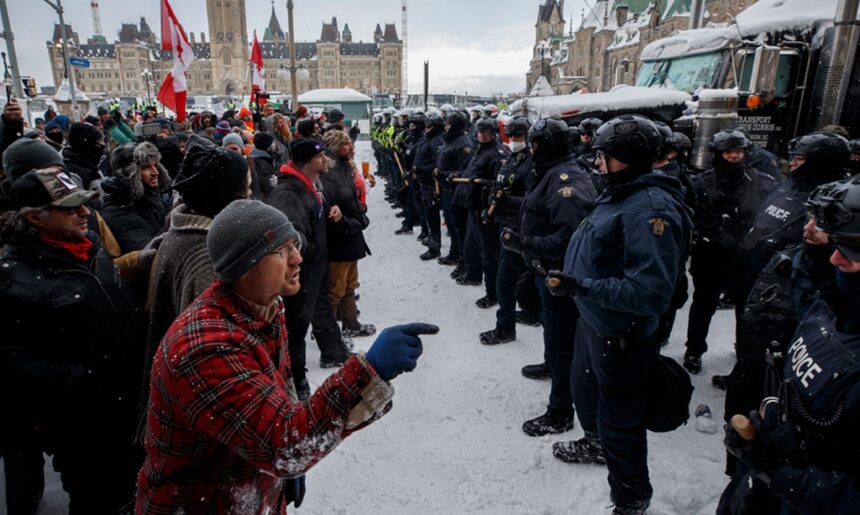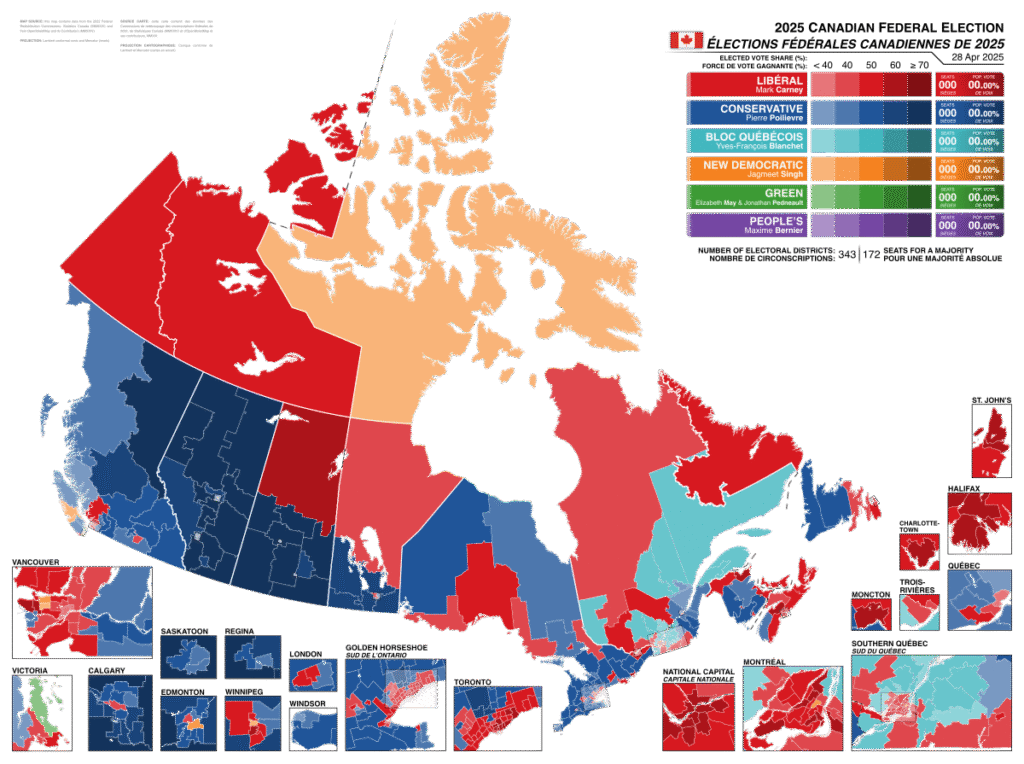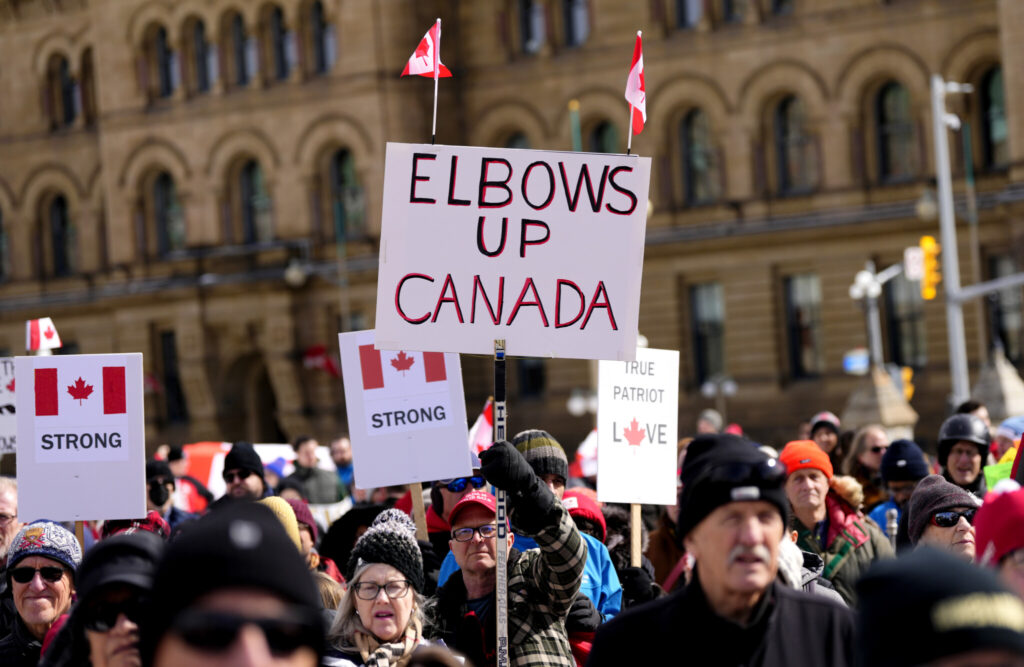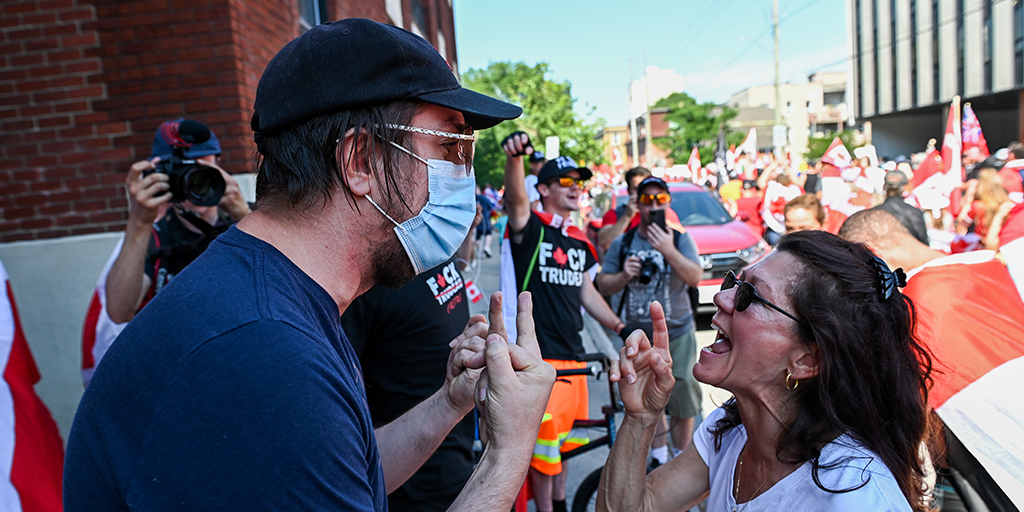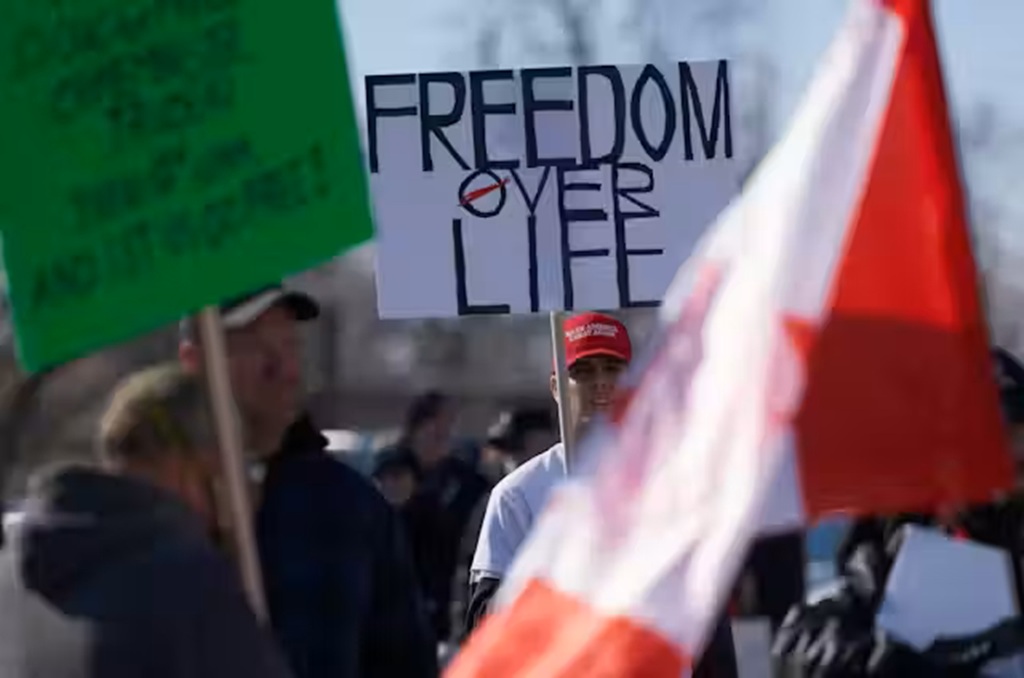Canada’s 2025 federal election put a spotlight on just how much the political centre has shrunk, even though millions of Canadians still say they land in the middle. The Liberals, led by Mark Carney, held onto power with a minority after a campaign defined by tensions over national sovereignty and trade.
Conservatives lost ground, with Pierre Poilievre not even keeping his seat. The NDP’s collapse and the rise in nationalist rhetoric on all sides exposed a real split, not just between parties, but between regions and voters.
What’s left is a Parliament stacked with strong voices from the left and right, while many centrists feel politically homeless. Centrist options are thinner than ever, even though the appetite for compromise and balanced solutions remains high among Canadians.
The results have amplified polarisation and social divides, with regional splits—especially between urban and rural voters—showing no signs of fading. As sovereignty and influence from abroad take centre stage, the search for a political middle—or even a sense of common ground—looks tougher than ever.
The 2025 Election: A Snapshot of Canada’s Divided Politics
Canada’s 2025 federal vote pulled back the curtain on the cracks running through our political map. The stakes felt higher than ever, with power in Parliament hanging by a thread and communities split along old—and new—lines. Fear of outside influence simmered in campaign ads and debates, while worries about Canadian identity and representation shaped the tone across the country.
Electoral Results and Regional Realities
The election delivered a Parliament defined by slim margins and upsets. Mark Carney’s Liberals emerged with a minority, but it was no easy win. The seat count was close enough that every contested riding carried weight, with some battles coming down to just a handful of votes. Early results revealed how divided the country was—not just in party preference, but across regions and communities as well. For a detailed breakdown, see the Canada election 2025 results in charts.
Major shifts stood out:
- Liberals held enough seats to govern but lost their grip on key regions, particularly in Western Canada, where Conservative support stayed solid.
- Conservatives, led by Pierre Poilievre, fell short—Poilievre himself lost his seat, marking a dramatic turn.
- The NDP collapsed, failing to hold onto party status for the first time in decades.
- Bloc Québécois and Greens made small gains, mostly in urban and youth-heavy ridings.
The vote revealed classic patterns:
- In the West—especially Alberta and Saskatchewan—Conservative candidates dominated, riding on years of scepticism toward Ottawa.
- In urban centres like Toronto, Montreal, and Vancouver, Liberals held ground with multicultural voters and younger families.
- The rural/urban gap grew even wider, making compromise in Parliament an even tougher sell.
Some ridings became battlegrounds, with recounts required in places where fewer than 200 votes split the top two parties. This razor-thin divide was clear in Canada’s tightest races.
These results confirm what many Canadians already felt: the old political centre has almost vanished. Strong voices on the left and right now dominate, squeezing out parties that try to land in the middle. The live election coverage only amplified a sense that many voters, especially centrists, are left looking for a home.
Resurgent Nationalism and External Influences
National identity took centre stage in 2025. From the first debate, parties traded blows over who would best defend Canadian interests, not just at home, but on the international stage. This pulse of nationalism grew louder as negotiations with the United States, led by the Trump administration, took a sharp turn.
Throughout the campaign, politicians and pundits warned about potential U.S. trade annexation moves and tariffs that threatened Canadian jobs. Mark Carney made headlines promising to protect Canada against American threats, declaring Canada would “never yield to Trump’s threats.”
Key campaign themes included:
- Rejecting U.S. interference: All major parties painted themselves as staunch defenders of Canadian sovereignty.
- Economic independence: There were pledges to shield Canadian industries, from agriculture to tech, against cross-border shocks.
- Cultural pride: Candidates tapped into concerns about “Canadian values” fading under U.S. influence, drawing sharp lines about what sets our country apart.
This wave of nationalism fueled a tough, sometimes bitter, tone in speeches and ads. It also shaped the strategies of parties trying to appeal to different regions—for example, the Liberals courting urban progressives wary of American culture wars, and Conservatives doubling down on energy independence in the West.
External factors—real and perceived—locked in voter anxieties and hardened loyalties. According to the Washington Post reporting, fears of U.S. overreach and doubts about foreign meddling were never far from voters’ minds. The push for Canadian independence also gave a boost to smaller nationalist movements, which focused on keeping decision-making close to home and out of Washington.
This focus on sovereignty was sharper and more personal than in previous elections. It drove turnout among worried voters, but often left moderate voices drowned out in the noise.
By the time polls closed, it was clear: the battle for Canada’s centre wasn’t just about policy, but about identity. The 2025 election put these divides under a spotlight, and there’s little evidence that those splits will heal anytime soon.
Polarisation and the Missing Middle: Is Canada’s Centrism Under Threat?
Polarisation isn’t always about wild ideology. Often, it’s more about how people feel and how fiercely they grab onto their side. Canada’s “missing middle” raises a bigger question: has the country lost the gentle art of compromise, even if most Canadians still think of themselves as centrists? The 2025 election made that question feel more urgent than ever.
Where Do Canadians See Themselves on the Spectrum?
If you ask most Canadians where they fall politically, the answer is often surprisingly moderate. Polls leading up to the 2025 election showed that more than half of Canadians still think of themselves as “centrists.” In conversations at the rink, in group chats, or on social media, you’ll hear a similar story—most don’t relate to the loudest voices coming from either political extreme.
But even as people choose the middle in surveys, something has shifted. Strong emotions and rigid loyalties now drive political life, instead of pure policy or ideology. The middle hasn’t disappeared, but it feels lost in the swell of louder fights. Research shows that voter identity aligns more with parties and personalities than with a classic left-right divide. Many Canadians might say, “I’m in the centre”—but they’ll defend their chosen team online and at the ballot box with a passion we didn’t see a decade ago.
Some trends that stand out:
- Canadians still cling to the centre—recent surveys show over 50% self-identify as moderate.
- Party loyalty has hardened. People are sticking with their chosen side, even if it means accepting parts of a platform they don’t love.
- Social media echo chambers are fueling frustration and quick judgments. It’s easier to block, mute, or argue than to find common ground.
- The “missing middle” isn’t just about ideas—it’s about the temperature of debate and the shrinking appetite for calm discussion.
If you want a look at how these shifts showed up in 2025, check out the Canada election 2025 results in charts. The numbers confirm what many suspected: most people still say they’re centrists, but the growing heat in public debate suggests otherwise.
Party Positions and the Collapse of Compromise
Consensus used to be a badge of honour in Canadian politics. Big changes happened in tiny steps, with cross-party committees and quiet hallway deals. That approach has faded. The 2025 election showed how far the main parties have drifted apart on the issues that matter most—to both voters and the country’s future.
Here’s how the main divides look now:
- Trade: With U.S. threats rising, the Liberals doubled down on “economic sovereignty,” while Conservatives warned against closing doors and hurting Western exports. The space for a nuanced trade deal shrank fast.
- Sovereignty: Both sides wrapped themselves in the flag, but with very different messages. The Liberals promised to fight for a “strong, independent Canada” on their terms. Conservatives responded by accusing the government of letting the country become too dependent on foreign interests.
- Climate action: Instead of a middle road, parties staked out opposite ends. The NDP’s collapse left a clear gap—while Greens demanded faster change, Conservatives hit back with full-throated support for fossil fuels and big projects.
- Social spending: The Liberals pitched bold plans for child care and health funding. The other side labelled them unaffordable. No one stepped up with a balanced “pay as you go” vision that might have pulled in swing voters.
What does this mean for Canadians? Centrist policy used to look like a blend of the best ideas from left and right—now it feels like a relic. Compromise, once considered a strength, is seeing less room to breathe.
People know how far apart things have moved. They see it in the news, social media brawls, and in their family arguments. As the Reuters coverage of the 2025 election puts it, tensions over “national sovereignty, economic stability, and social priorities” have rarely felt so fierce.
Even long-term observers aren’t immune to the sense that compromise has collapsed. The New York Times noted after the results that Mark Carney won by convincing voters he could face “a new world of brinksmanship”—but not by offering grand bargains or centrist deals. Their Canada election takeaways point to a future where the instinct to find middle ground is rare, and the voices demanding all-or-nothing solutions are louder than ever.
For anyone hoping for a comeback of cross-party cooperation, the lesson from 2025 is clear: the habits of compromise that once defined Canadian politics are at risk. And those Canadians who still quietly stake out the centre may find themselves with fewer true champions in the years to come.
Economic and Social Divides Fuel Political Fragmentation
Canada’s 2025 election didn’t just reveal sharp differences along party lines—it ripped the cover off deeper divides that shape how people vote, who they trust, and whether they believe the system works for them. Rising costs, uneven access to opportunities, and a growing digital divide now cut straight through the country’s political middle, making it easy for division to flare up and harder to find common ground.
The Role of Inequality and Cost of Living
Affordability came up in every debate, campaign stop, and dinner table this election. While a small group of Canadians builds increasing wealth, thanks to rising assets and surging property values, the majority face higher rent, food bills, and little hope of buying a home. Housing unaffordability, in particular, became a flashpoint from Toronto to Vancouver and beyond.
- Billionaire wealth in Canada has reached new highs, while the average family feels squeezed. Wages haven’t matched runaway costs of living, and the pandemic’s aftermath only widened the gap.
- Regional wealth divides are growing fast. The 2025 election map is full of tension, showing obvious lines between urban centres with booming economies and rural or Northern areas where opportunity looks scarce.
- Populist ideas found a new audience. Voters tired of establishment answers turned to candidates promising bold actions, even if those answers skipped over facts or real costs. A promise to “fix housing” or “tax the rich” sounded better than more middle-of-the-road solutions.
This isn’t just theory. Canada’s fractured results—where even supposed “safe seats” saw close calls—mirror a wider frustration. People once willing to give compromise a chance now want big changes, which leaves centrist voices struggling to break through. For a look at how the numbers reflect these shifts, the Canada election 2025 results in charts show just how much regional and class divides factored into the final outcome.
When a system creates winners and losers so starkly, voters lose patience with the middle. That’s showing up in Parliament, where passionate debates over cost-of-living fixes are crowding out slow-and-steady talk about balance and moderation.
Digital and Data Divides: New Frontiers for Polarisation
If wealth and geography shape old divides, the digital gap is creating new ones. Technology changed the way Canadians connect, campaign, and even vote—but not everyone came along for the ride.
- Tech-savvy urbanites have advantages. Most Canadians in big cities rely on fast internet and digital services for work, news, and even basic government help. For them, issues like online privacy, data rights, and AI regulation became real voting matters.
- Rural and Indigenous communities often feel left behind. Access is poor, with unreliable or expensive internet. That shuts out entire populations from debates and even services, making it harder to participate as political equals.
- AI and data privacy are new battlegrounds. While some voters demand tough action on the risks of artificial intelligence, others worry about being left out or misunderstood by tech-driven policy. Debates over governing AI and data are fast becoming a wedge, especially for younger and highly educated voters.
This digital split showed up in surprising ways during the campaign. Urban ridings—fluent in social media trends—fueled new movements and protest votes. But outside major cities, digital exclusion meant some communities felt overlooked or ignored. These splits don’t just affect access to information—they impact political trust and who gets heard.
The risks go deeper than ever before. When some groups shape the future of AI and digital policy while others struggle for basic internet, the sense of fairness in the political process fades. As highlighted by Mass Polarisation in Canada: What’s Causing It?, digital divides now add another layer of separation.
AI governance, privacy protections, and digital inclusion will be core issues in sessions to come, not afterthoughts. Canada’s middle can’t thrive if whole communities are off-grid or left out. The 2025 election proved that bridging both old and new divides will take more than calls for unity—it’s about changing who has a real voice in shaping the future.
Canada’s 2025 election drew sharp lines, leaving the political middle feeling smaller than ever. Most voters still see themselves as centrist, yet Parliament now sways between louder voices on each side. Forces like rising costs, digital gaps, and questions about national identity keep pulling Canadians apart instead of together.
Rebuilding the centre will take more than calls for civility. Better representation could come from voting reform, economic policies that close the wealth gap, or smart rules for governing technology that won’t leave rural and marginalised communities behind. Trust grows when people see compromise in action, not just in speeches.




